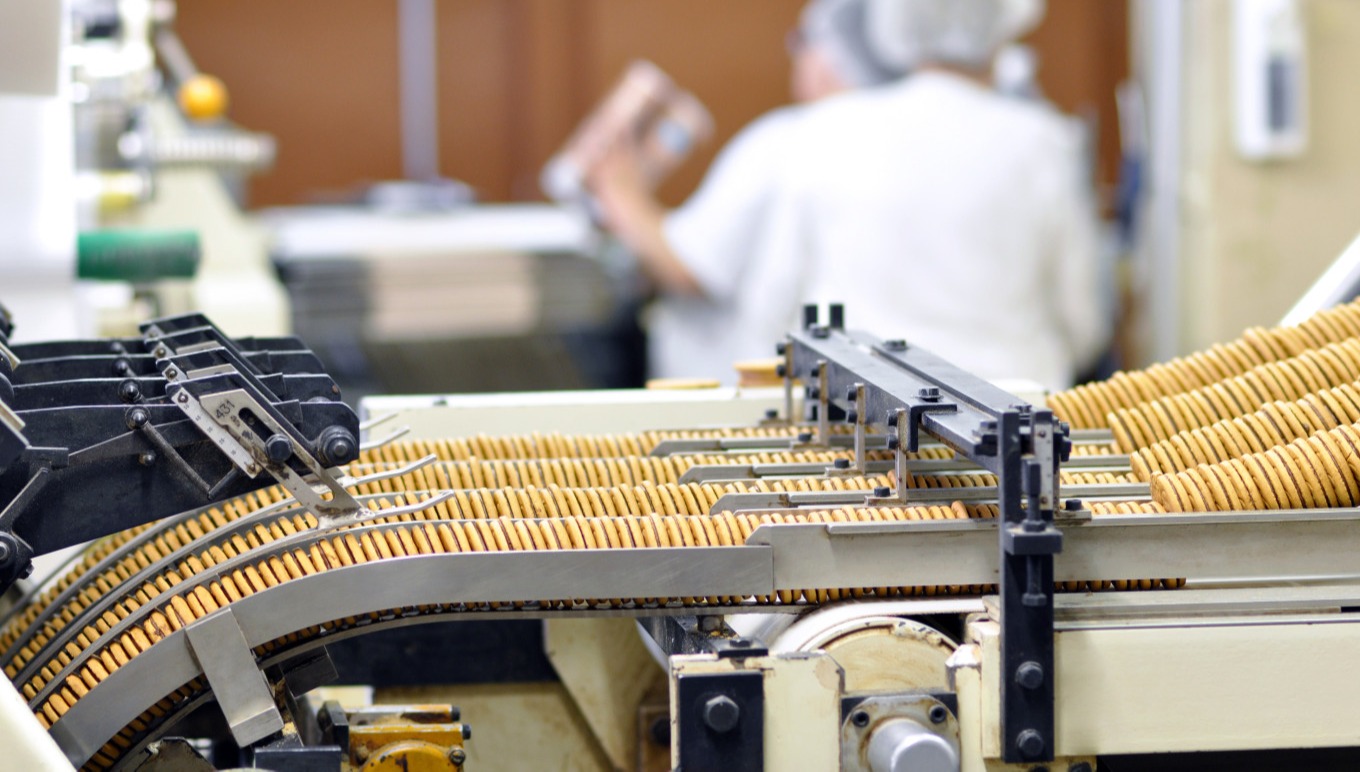In diesem Beitrag vorgestellt
How To Reduce Food Recall and Traceability Risks in Your Operation
How To Reduce Food Recall and Traceability Risks in Your Operation
Blog-Beitrag
Key Takeaways
This blog sheds light on major food recall and traceability risks and how ERP and PLM systems help reduce them.
Prevent allergen contamination through recipe management, allergen tracking, bi-directional traceability and staff training supported by ERP.
Avoid mislabeling and packaging errors with ERP-integrated labeling, PLM packaging workflows, barcode scanning and digital approvals.
Enforce consistent hygiene practices using ERP-driven inspection statuses, task reminders and real-time hygiene documentation.
Stop cross-surface contamination via documented sanitation SOPs, automated cleaning schedules and digital accountability features in ERP.
Adopt a holistic approach with Aptean Food and Beverage ERP for full visibility, regulatory compliance, cloud scalability and AI-driven risk monitoring.

Imagine biting into your favorite granola bar—only to crunch down on a shard of plastic. That’s not just a ruined snack; it’s a reputational crisis in the making. But it happens more often than you’d think. According to FSNS, 296 food recalls were issued in 2024—costing companies millions in lost product, lawsuits, shaken consumer trust and irreversible brand damage. Just ask the brands behind recent high-profile recalls; one slip is all it takes to land in the headlines for the wrong reasons.
Maintaining food traceability may seem like ticking a regulatory box, but it’s your frontline defense against disaster. You can’t afford to guess where an ingredient came from or scramble to locate contaminated batches after your products hit the shelves. That’s why leading food businesses rely on technology, like purpose-built food enterprise resource planning (ERP) systems, to do the heavy lifting in tracing every step of your ingredients’ journey, flagging risks early and simplifying recall readiness. When traceability is built into your operation, you’re not reacting after something has gone wrong—you’re protecting your customers and your reputation in real time.
From allergen contamination to mislabeling and hygiene failures, the risks are real, the stakes are high and the consequences are costly. In this blog, we'll break down the top food recall and traceability risks that can pose a threat to your food business—and show you how to fight back with smart processes, airtight protocols and tech-driven tools that make food safety a strength, not a liability.
Allergen Contamination
If you’re tracking food safety trends, one finding stands out: undeclared allergens continue to drive the largest share of product recalls, accounting for 34% of cases last year. You've likely seen these headlines: cookies with a possible presence of milk and nuts or breadcrumbs accidentally packaged with sesame. For your business, even a single similar misstep can trigger costly recalls, serious health outcomes for customers and long-term damage to your brand’s credibility.
What makes this risk even trickier? Allergen labeling laws are anything but uniform. The U.S. calls out nine major allergens, while the UK and EU require labeling for 14. Staying compliant in every market—while preventing cross-contact on the shop floor—demands robust allergen management. Production lines that share equipment between recipes multiply these hazards. In other words, it’s a regulatory maze with high stakes: failure to comply can lead to costly fines, product recalls and loss of market access.
How To Prevent Allergen Contamination
Managing allergen risks is about building disciplined protocols into every layer of your operation. At the frontline, standardizing how your team handles allergens is a must. This means keeping separate utensils, color-coded containers and defined storage areas for allergenic ingredients.
Your employees should know not just the “what,” but the “why” of allergen separation, which means consistent training matters. You can’t count on people remembering every rule if they don’t appreciate why it’s so important, especially new hires and temporary staff. That’s why building regular allergen-awareness training sessions and easy-to-reference signage is so effective. These actions lower the odds of cross-contact slipping in during busy shifts.
But the real magic happens when you have allergen management functionality and traceability software features automatically tracking data and streamlining processes. The right food ERP can help in ways that checklists just can’t:
Formula/recipe management with allergen tracking: Link every raw material and finished good to its allergen profile, reducing human error.
Bi-directional traceability of ingredients and finished goods: Instantly trace anything you make, backward and forward, in the event of a product recall.
Product specification module: Centralize all ingredient, allergen and nutrition information, with real-time updates and easy export to ensure compliance with food traceability regulations.
All together, with the right procedures and software, food traceability is faster and more reliable, with far fewer manual errors. In a recall, you can pinpoint affected batches instead of risking a wide-scale, brand-damaging product recall with fuzzy data—enhancing your overall food safety efforts.
Mislabeling and Packaging Issues
Mislabeling may seem like a rookie mistake, but it’s one of the stealthiest threats to food safety and traceability. When the wrong label lands on the wrong product, you risk selling items with undeclared allergens, missing nutrition data or even expired ingredients. This isn’t only a health risk—it’s a reputational and regulatory nightmare.
So why does mislabeling keep popping up? Blame inconsistent templates, rushed production and manual, last-minute fixes. A single copy-and-paste error can propagate through the entire production run, landing your organization in the hot seat with customers and regulators alike. It’s the kind of basic slip-up that can cost you everything.
How To Avoid Labeling-Related Recalls
If you want food labeling to be a strength, not a vulnerability, consistency is crucial. Start by locking down labeling templates and standardizing approval workflows. Every label should flow through a controlled, step-by-step process including digital approval chains, QA review and automated print verification—no more freestyle edits five minutes before a shift.
Barcode scanning and automated validation routines are another easy win. These small digital guardrails catch mis-labels, mismatches and out-of-date codes before a product leaves the line, enhancing traceability and reducing your risk of a product recall.
Deploying industry-specific technology, like a food ERP system or product lifecycle management (PLM) software, levels up your packaging and labeling to ensure regulatory compliance:
ERP-integrated labeling tools: Generate detailed, regulated product labels and barcodes directly from your ERP, using live ingredients and product data, without repeat data entry.
PLM software for packaging development: Leverage built-in nutrition fact calculation, complete packaging reviews, track artwork revisions and collaborate via purpose-built commenting and verification tools.
Version control and label approval workflows: Ensure label changes are reviewed, approved and linked to the right finished goods so nothing slips through the cracks.
Within advanced industry-specific solutions, you gain rapid traceability and streamlined compliance. With every ingredient and label version linked to product specs and batch data, it’s easier than ever to isolate issues and take action before a small error becomes a brand crisis.
Inconsistent Hygiene Practices
Hygiene slip-ups in your operation can eat away at food safety and traceability every single day. We’ve all seen the damage—whether it’s E. coli found in onions served at major fast-food chains or salmonella on cucumbers. Outbreaks like these don’t go unnoticed or unpunished. Instead, they send shockwaves through the industry, and the responsible brand’s customer loyalty plummets overnight.
The roots of hygiene failures? Gaps in staff accountability and, more often, a lack of rigorous environmental monitoring. Skipped sanitation cycles or handwashing shortcuts during busy shifts can give pathogens and foreign materials a chance to infiltrate. The result? Hazardous products that can lead to expensive product recalls—and even legal consequences.
How To Enforce Consistent Hygiene Standards
Routine hygiene and safety training is non-negotiable. Make it a habit, not a checkbox on your onboarding paperwork. Reinforce with eye-catching signage in all work areas, serving as a visual nudge for your team and reminding everyone of the “why” behind the rules.
Personal protective equipment (PPE) matters, too. Mandate proper PPE usage and back it up with spot checks. When team members see that hygiene and PPE rules are being enforced, standards rise. It sends a message: “We value food safety because we value you—and our customers.”
Here’s how an ERP system for the food industry can make hygiene stick:
Advanced comments module: Attach hygiene instructions, reminders or special requirements to specific product lines or production orders, visible in real time.
Inspection status features: Assign inspection statuses to lots and batches, blocking goods that haven’t cleared required hygiene protocols. Alerts notify your staff when checks need action.
Workflow-driven task reminders: Customize inspections and comments so your employees get the right task cues—like “sanitize before use”—precisely when it counts.
With these measures running in the background, your organization gains the ability to document, monitor and enforce hygiene at every stage. That level of control goes far beyond what manual logs could ever deliver, making food safety and traceability a routine part of your food business, not just a report after the fact.
Cross-Surface Contamination
When you’re juggling multiple product lines, surface and equipment sharing can be your weakest link in food safety. Cross-surface contamination happens when equipment, tools or even staff clothing move allergens or pathogens from one product to another. It’s especially risky in operations with allergen-diverse portfolios—think nuts one hour, dairy the next.
While you might believe your sanitation routines are up to snuff, the reality is that overlooked surfaces, forgotten utensils or “quick rinse” cleanings can leave behind dangerous traces. A single instance can lead to a broad recall, making tracking affected ingredients and executing withdrawal a real headache for your team and your supply chain partners.
Preventing Contamination Through Sanitation Protocols
Prevention starts with crystal-clear cleaning and sanitation standard operating procedures (SOPs). Lay out in plain language what, when and how cleaning happens during every production run. Don’t rely on “this is how we’ve always done it”—document specifics and update them as your processes evolve.
Training is critical. Make sure your employees know exactly how to rotate surfaces and sanitize equipment between batches. Regular refreshers prevent shortcuts and clarify why skipping a step isn’t just a minor error, but a recipe for large-scale product recall.
Here’s how a purpose-built food and beverage ERP system can automate and verify cleaning tasks:
Automated cleaning task scheduling: Assign cleaning rotations to teams or shifts using custom digital checklists.
Custom statuses: For example, you could set up a “Sanitization Needed” status. Your ERP would then prompt workers to complete that cleaning task before prepping new product—no skipping allowed.
Inspection module accountability: Build accountability steps with audit trails and digital signatures, so every sanitization action is recorded and traceable.
Digital accountability means greater accuracy and simpler auditing. You’ll never have to second-guess if the right cleaning happened—your traceability trail ensures every action leaves a digital footprint, closing the loop on contamination risks.
Holistic Food Safety Improvement With Aptean
You’ve now seen how food recall and traceability risks—from allergens to mislabeling and hygiene gaps to cross-contamination—can cause splashy headlines, operational chaos and significant brand erosion. These are real challenges your organization faces every day. But the good news is, with a proactive approach and the right digital partner, you can transform risk hotspots into competitive strengths.
Enter Aptean. Our award-winning ERP systems for the food and beverage industry prioritize food safety, supply chain traceability and risk management. From bi-directional ingredient and product tracking to robust allergen control, we ensure you get complete visibility and control over every product, ingredient and batch.
Our industry-specific Aptean Food and Beverage ERP goes beyond the basics. It connects seamlessly with your other business systems (from customer relationship management to transportation tools), so you can break down data silos without hassle. Cloud hosting gives you continuous, scalable access, wherever your team is working, while maintaining world-class security controls. And upgrades and system maintenance are handled for you remotely—so you can focus on food safety, not IT headaches.
To stretch your competitive edge even further, our AppCentral platform is an all-in-one solution powered by artificial intelligence (AI) delivering prebuilt connections between your Aptean applications to streamline end-to-end processes and remove data silos. AppCentral also includes a set of innovative AI capabilities to provide predictive insights, automated workflows, easy setup and intelligent assistance via natural language chat.
Ready to upgrade your food safety and recall processes? Contact us now or take advantage of our product tour to discover how food ERP can transform your risk management and make food traceability your strongest asset.
Optimieren Sie die Rückverfolgbarkeit in Ihrem Betrieb
Sie möchten Ihr Lebensmittel- oder Getränkegeschäft weiterentwickeln? Wir helfen Ihnen gerne dabei.



 Jack Payne | Vice President, Product Management & Solutions Consulting
Jack Payne | Vice President, Product Management & Solutions Consulting